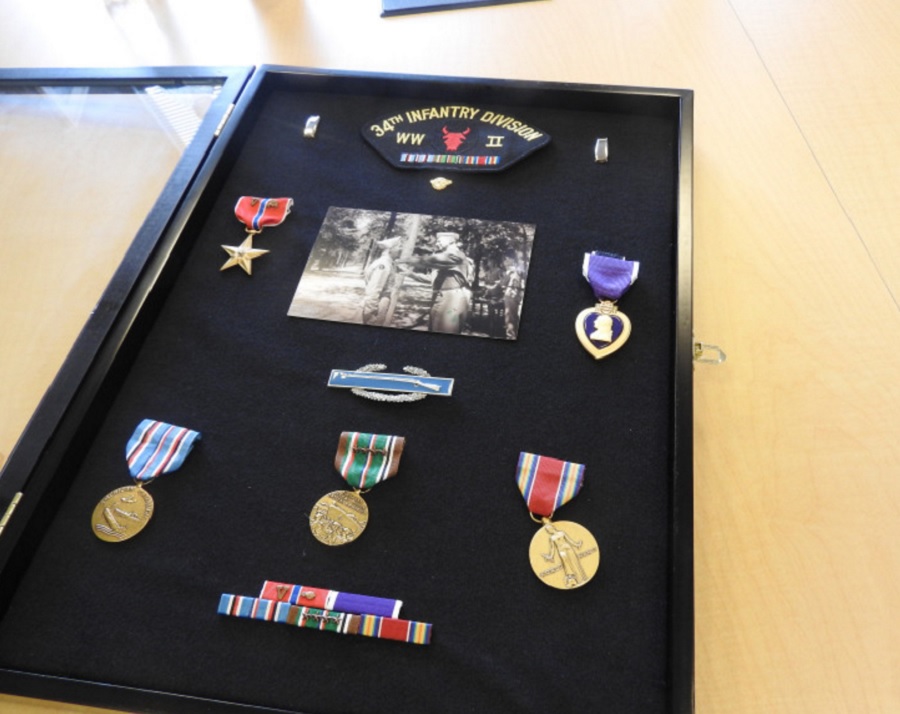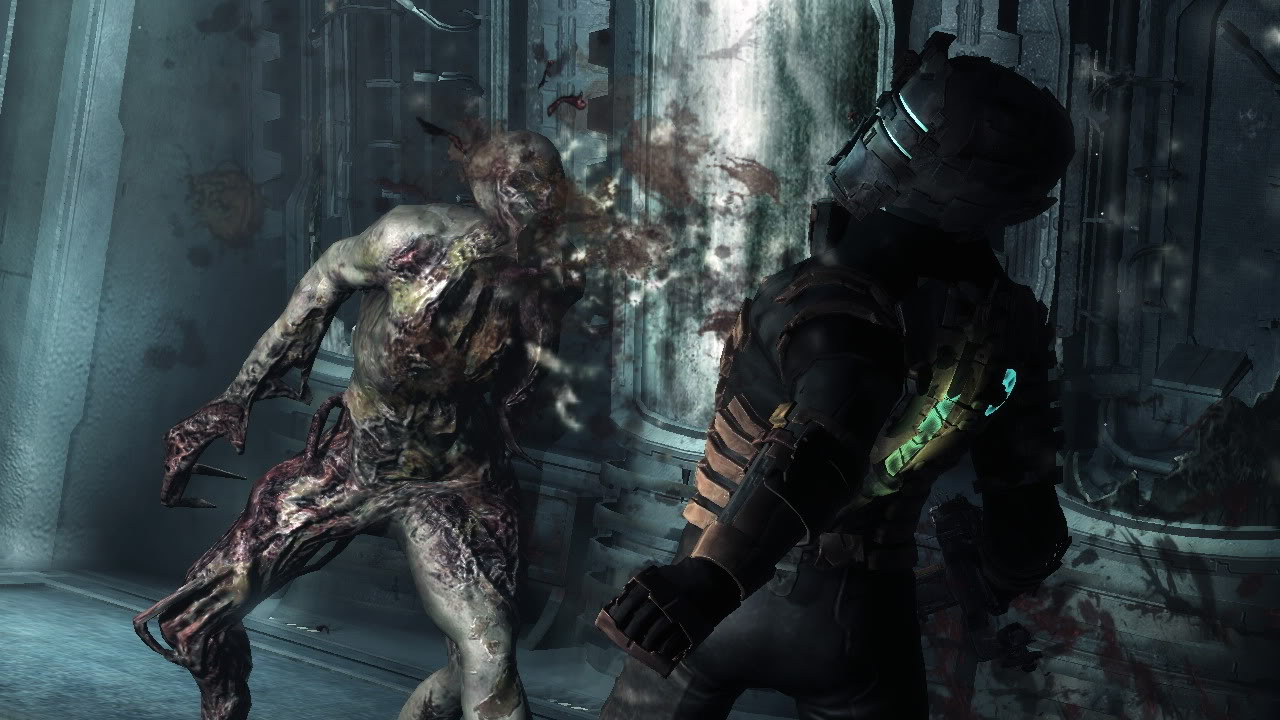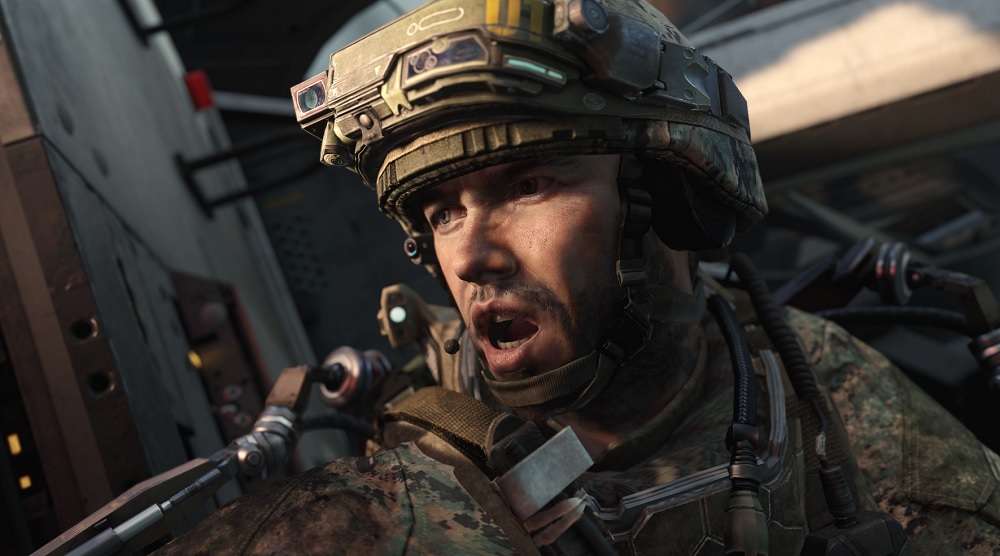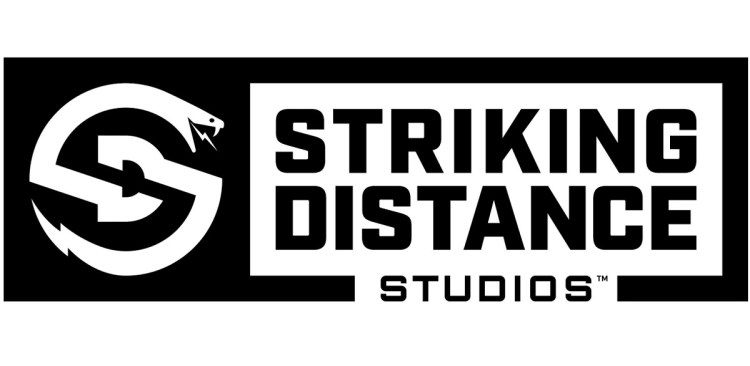I had a nice conversation with Glen Schofield, the former co-head of Sledgehammer Games and now founder of Striking Distance Studios. I asked him if he was making “Call of Dead Space,” referring to the past franchises that he worked on in his storied career.
“You’re trying to get me to say what I’m making,” Schofield replied.
While he couldn’t talk about that just yet, Schofield chatted about something that is relevant to a lot of game developers and publishers right now. And that’s how to build a large studio with dozens of employees in the middle of a pandemic.
Schofield left Activision’s Sledgehammer Games studio last year. There, he had run a studio with Michael Condrey and made games such as Call of Duty: Advanced Warfare and Call of Duty: WWII. Before that, they had created Electronic Arts’ Visceral Games studio and made the Dead Space games. After starting anew on his own, Schofield lined up funding from PUBG Corp., the maker of PlayerUnknown’s Battlegrounds, which has been downloaded more than 600 million times.
June 5th: The AI Audit in NYC
Join us next week in NYC to engage with top executive leaders, delving into strategies for auditing AI models to ensure fairness, optimal performance, and ethical compliance across diverse organizations. Secure your attendance for this exclusive invite-only event.
Schofield picked his hometown, San Ramon, California, for his new studio. He had just started moving his dozens of new employees into a new headquarters in the suburban city of the East Bay Area region, a couple dozen miles away from San Francisco. They found a place nine months ago and started moving in on March 1. But just a couple of weeks later, the company had to dismantle the office and send everyone home, Schofield said in our interview.
The building has a motion-capture studio, but the team can’t use it yet, as that involves a lot of people working closely together. And it’s not the kind of thing you can do at home, with everyone isolated. But Schofield said the company made three offers for jobs last week, and he is still hiring. They don’t need the mo-cap studio for a while, and they can get by working individually and using online video calls. The day starts with a 15-minute Zoom call for the whole team.
“We saw this coming and we had a couple of days where we told everybody to practice working from home,” Schofield said. “They came back and told us what they needed and what wasn’t working. We had our network guys fix things. We got cameras. Now we are getting underway, and starting to build.”
Schofield will give a solo talk about creativity in games at our upcoming GamesBeat Summit Digital online-only event on April 28 and April 29.
Here’s an edited transcript of our interview.

Above: Glen Schofield is the founder of Striking Distance Studios in San Ramon, California.
GamesBeat: How much are you revealing at this point?
Glen Schofield: Not a heck of a lot. We’re talking more about building the studio. People have been asking about how we’re able to work at home.
GamesBeat: What does the name mean?
Schofield: I was having a conversation with Steve as we were starting to come up with names. He was asking me, “What do you want to do with games? What do you want to do with the game we’re making and the studio we’re making?” I said, “I always want us to be within striking distance of greatness.” All of a sudden it clicked in our heads. Maybe there’s something there. We checked, and we were able to get Striking Distance. It makes sense. It was a discussion that’s near and dear to our hearts. Trying to make something that’s quality.
GamesBeat: Is this triple-A, as far as where the focus is? Is there any nuance as far as what people understand to be triple-A?
Schofield: We’re making a triple-A experience, yeah. We’re making a narrative experience. We’re working on the story right now, working on design. A lot of concept art coming in. It’s definitely about making a triple-A style of game.
GamesBeat: Do you have a building somewhere yet?
Schofield: Yes, and we just moved in three weeks ago. Two weeks ago we had to clear out. Since I’ve done this before, I was able to get us a place, pick out a place eight or nine months ago that I really liked here in San Ramon. We were able to get our designer and architect early and move in March 1, March 2. Then a week later, two weeks later we moved back out. We built a state of the art studio. It’s beautiful. As soon as we can, we can have you come over and check it out. We built a mocap studio. We’re the only game company on the East Bay and the only mocap studio in the whole bay area aside from ILM.
GamesBeat: How many people are there now?
Schofield: We have more than 70. We’re quickly approaching 80. We still have a lot of hiring to do, 40 or 50 more people, in all kinds of disciplines. We’re hiring even through the work from home time period. As a matter of fact, we made three offers this week. We’re still interviewing people through Zoom and that sort of thing.
GamesBeat: Is the team still pretty concentrated around San Ramon, or were you spread out anyway?
Schofield: One of the reasons I moved it to San Ramon, besides the fact that I found a great place and that it happens to be my hometown, is that I knew of a lot of great developers who lived in the East Bay and traveled to Silicon Valley every day. That’s a long haul, and it gets worse and worse. It was an easy choice to pick the East Bay as a new hub. We’ve gotten a lot of publicity from the local area for bringing in the video game industry and high tech to the region, which has been nice.
GamesBeat: So Condrey gets the west side, and you get the east side.
Schofield: Yes, we’ll take the East Bay.

Above: Call of Duty: WWII
GamesBeat: Is it different starting up on your own like this, without someone you partnered with for a long time? What’s different?
Schofield: The first thing I went out to do was to hire my C staff. My first hire was Steve Papoutsis as my chief development officer. He took over the Dead Space franchise when I left EA, and then he took over the studio, Visceral Games, after I left. He ran Visceral for probably six or eight years there. He and I were good friends beforehand. When I left EA I had recommended Steve to be the new GM. Then I hired a COO and a CTO and a chief creative officer.
Now that we had the core of the team, we could all branch out into the areas we knew and bring in people we knew. Everyone was from the game industry. Everyone had 20 years of experience on my C staff. Right now, even with 70-something people, I think the average development time in the game industry is 14 years. We’ve hired a very senior team. We’re bringing in less experienced people now, because you need all different experiences.
I learned a lot putting together Sledgehammer. Where to get the equipment, the people, all kinds of things. It made building Striking Distance a lot easier.

Above: Glen Schofield’s grandfather was in the 34th Infantry Division and earned a Purple Heart.
GamesBeat: So, you’re making Call of the Dead Space now?
Schofield: There you go! You’re trying to get me to say what I’m making. I’m not gonna do it. Can’t do it just yet. But you know me, I’d love to talk about the creative as much as possible. We’ve only been working on the game about seven or eight months. Most of it coming up with mechanics, and a lot of story. We have a couple of great story people. We have people from every discipline now, so we’re getting underway and starting to build stuff. The underlying technology as well.
GamesBeat: Game technology has moved to the point where you can function remotely.
Schofield: We kind of saw this coming, that we were going to have to work at home at some point, or at least we thought we did. We had a couple of days where we told everyone to work from home, like a Thursday and a Friday, and we practiced working from home. People came back on that Monday and let us know what equipment they were missing or what wasn’t working. We had our network guys fix everything. We went out and got whatever equipment, in most cases cameras. We secured and encrypted all the PCs for everyone who wanted to bring a PC home. We were ready when we shut down the studio, and we’re 100 percent up and running.
We meet every day for 15 minutes, all on Zoom. We have 70-something people up on Zoom. We talk about blockers and what’s not working and what is working. We’re able to continue to build the game. There’s going to be some things that take a hit a bit. We don’t need it yet, but when we get into the motion capture studio — luckily we did some motion capture earlier, so that gets us going. Of course we’re not going to bring actors up for a while. Hiring is a bit more difficult. But we’ll get up and running.
GamesBeat: I was going to ask how you raised your money, but I assume PUBG Corp. is really the way that was done. Is it fairly traditional in that respect?
Schofield: Yeah, they’ve got the resources. When I looked around, from starting it on my own — do I go out and get funding? Do I go and get a big publisher, a big company? I talked with everybody. It was really me interviewing them to see what was going to be the best fit. I just really enjoyed talking with C. H. and with Ashley, who run PUBG. C. H. is the CEO. Great guy. Came out of development, was an engineer himself. His philosophy was, “Tell us what game you want to make and let’s see if we can fit it loosely in this world we created with PUBG. But build a game and we’re gonna leave you alone.”
As a matter of fact, I’ve had to tell them, “Hey, we do want milestone meetings with you guys.” Even in the milestone meetings, they may make a suggestion or two, but C. H. is always saying, “But it’s your game. You decide what you want in it, what you want to do.” They gave me the money to go build the studio where I wanted, how I wanted, hire who I wanted. It really is a dream come true. I’m building the studio I want in the place I want with the people I want and making a game I really want to make. I couldn’t ask for anything better.

Above: PUBG Corp. is bankrolling this new studio.
GamesBeat: Did you ever think that maybe the bay area isn’t really the place to make games? Did you consider any other, lower-cost areas?
Schofield: I never really considered that, because I knew how many great developers are here. Now you have Sledgehammer and ILM and so many game companies around here. I could see it becoming a hub again. Maybe EA isn’t making as many games here, but they still have a big presence. 2K has a big presence. I know that there are other areas to go, but I was going after where I knew the greatest developers were.
GamesBeat: It seems like there is an important distinction to be made between San Francisco or San Mateo and then the Greater Bay Area. The wider bay area hasn’t been exploited as much as it could be.
Schofield: The truth is, this is a lower-cost area. Comparing what we paid at Sledgehammer to what we get here, it’s so much more. I’m also part of this great community, which has really embraced us. We’re right near everything. We’re in a place called Bishop Ranch. They have bus systems to and from — even the city, you can get a bus from here if you want to. They have their own bus stop to go to the BART. They have bikes and scooters to go from building to building. They have all the amenities, everything we wanted here. It was kind of a no-brainer.
GamesBeat: We’re getting a bit into the area of what we wanted you to talk about at the conference, the creative side. Did you approach being creative in a different way this time around, having the opportunity to start everything new and try to come up with your ideas?
Schofield: I approach each game a bit differently. This one is a complete — there’s no license. I don’t have a Call of Duty or a World War II where I have to fit a game that I want to make into that framework. Advanced Warfare was one that gave me more creative freedom, but again, you knew it was a particular style of game. This one I was just coming at it saying, “What’s the game I want to play?”
That’s what I’m able to make, the game I want to play. It’s going to be near and dear to my heart. So far, so good. We’re coming at it from that perspective. What is it that I want to do? That’s been a lot of fun.
GamesBeat: I remember the DICE Summit talk you gave, where you talked a lot about throwing images on a wall and trying to look for something that would inspire you. Is that part of what you think about now?
Schofield: It’s a good thing to bring up. One of the first people I hired was my lead concept artist. I said, “Go out and get a team of eight people. Let’s start drawing and painting and creating things.” We have walls up of concept art. “No, that one doesn’t work, but this one over here works. Let’s change this up.” We spend a lot of time with the concept artists building stuff. If it’s not exactly right, it’s early enough that we can get it right.

Above: Dead Space 2 is one of the games Glen Schofield helped make.
GamesBeat: Did you do any of that yourself, or are you more managing what happens there?
Schofield: I’ll give them little sketches here and there. I’m always writing on the boards and drawing little things. I can get an idea across a lot easier through the fact that I can draw. But no, I leave that up to the experts on digital stuff. I’m still just a guy who likes to get his hands dirty and paint. I’m clean now. I’m still painting things over here. But the fact that I can draw helps a lot with explaining my vision.
GamesBeat: You seem to be pretty unique in the game industry that way, a studio head who has a real hand in art. That doesn’t seem very common.
Schofield: I get a lot of questions from other artists. “How did you move up? How did you get so involved?” Right from the beginning I always asked a lot of questions. I would be the artist who would — because I started out in art, started out doing backgrounds for the game industry. My first four or five years I was an artist. Then I moved into art direction, where I was still doing some art. That was on the Genesis and the Nintendo 64, stuff like that. I think the last game where I did any art was on the PlayStation. When I was directing games, I would do some art here and there, but I’d just do it to kind of keep my hand in. When 3D came along, though, I’m not that good at it.
I guess we all come up different ways as directors, different paths. But I eventually went on and got an MBA, so that I could understand the business aspect of this as well. Especially since we started to work with large budgets and companies that are public and things like that. It really helped me understand the business end a lot better.

Above: Glen Schofield of Sledgehammer Games talks about the passion that drove Call of Duty: WWII at GamesBeat Summit 2017.
GamesBeat: With this kind of company, would you tap a lot of outside people? The traditional thing is to have art direction inside a company and then find artists in other places to execute on it.
Schofield: We’re doing some of that. There’s no doubt that you have to outsource. We’ll probably keep the studio to around 150 people, but a game like this is going to take 300 people to make, something like that. Then you add in testing and you maybe double that these days. I’m working with a couple of outside places. We’re actually getting more technology than we are art as far as help right now. We’re bringing a lot of the artists in-house, so I can work closely with them. I work better that way. We’re working with others. They can take on different portions of the game. We’re working together very closely. But we are the managing and head studio, the creative part.
GamesBeat: I wondered, with the whole remote thing now, whether there are some things — it seems like mocap is going to be a real problem. You can’t do that remotely.
Schofield: Yeah, that’s going to be a tough one. Luckily we don’t need it for a few months. We have a bunch of animators who luckily got a bunch of mocap done before this. We have enough to keep us going for the next few months, all the moves we need to get our characters up and running. But yeah, once you get into the different movies and things like that, we’re going to need to get actors. We’re going to need to scan the actors and do a lot of the technical stuff that we just can’t do right now because of the virus.
Audio is going to be tough, because the audio guys need to go out and work with the composers and things like that. Eventually we’ll have to get some music. But again, that’s down the line a bit.

Above: Call of Duty: Advanced Warfare main character Jack Mitchell is aghast at having to redownload the game all over again.
GamesBeat: People have these ideas for designing games inside virtual reality, putting on headsets and creating the environment. Is that starting to get anywhere near maturity or the mainstream in game development?
Schofield: Not within our studio. Now, there are two concept artists that do work in VR. I’ve put it on a few times, and it’s pretty cool. But after a while, getting in there, you kind of have to bring it into Maya. What they’re doing in many cases is building the quick geometry in 3D. It’s pretty cool to see. But then at some point they bring it into Maya or Photoshop and all that and they’ll work on it there. They can get it up and running quickly.
I could see art directing a game like that someday. I could go down the hallway and point to something on the ceiling or on the floor and say, “Let’s work on that texture. Let’s make this hang down further.” I could see that being helpful. But then you have to get a lot more different types of equipment. We’ll have to see how helpful that could be. I can envision it.
GamesBeat: Well, congratulations on starting something new.
Schofield: I’m really happy. I’m looking forward to making a great game again. I wouldn’t be surprised if this working from home setup means more of my studio will work from home from time to time. It gives me the confidence to say, “Hey, go ahead and work from home for a week.” It was harder before. You’re going to work from home? How does that work? But I get it now.
We have a seasoned group here. We hope to just make something triple-A. We’re actually calling it quad-A. We want to go above and beyond and make something special. That’s what PUBG has allowed me to do. Hopefully we’ll have something great to release to our fans.
And we’re hiring! We’re not slowing down hiring. We need to build that team. We’re trying to keep this from slowing us down. We’ve got lots of jobs. We’ll hire during this period. We’ll move people. We’re doing all of that. It’s good for the industry. We have a lot of great jobs here.


